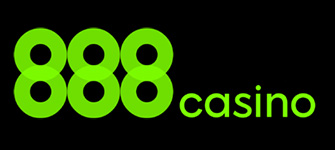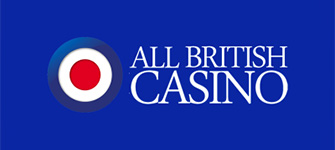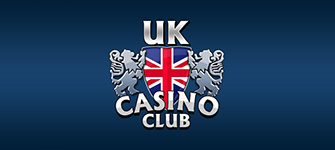Blackjack Odds
Blackjack is one of the few casino games which are actually beatable, or at least in theory. This is because unlike most of the other games available on the casino floor, blackjack is a game of dependent trials rather than being based on independent trials. Games like roulette, craps, and slots rely on pure chance for their outcomes since subsequent results are independent of previous ones.
Blackjack is unlike these games because the composition of the shoe or deck changes constantly as cards are being dealt. Since this is a game of dependent events, previously dealt cards can impact the odds of future outcomes. Here the advantage is a variable rather than a constant – it sways back and forth between the dealer and the player as the deck or shoe composition changes.
Furthermore, the structure of the game is such that certain card denominations favour the dealer while others work to the benefit of the players. This is not the case in games like roulette and slots where the advantage of the house remains constant regardless of what outcomes have previously occurred.
- ✓ The Basic Concept of Probability
- ✓ Converting Probability to Odds
- ✓ The Probability of Receiving Blackjacks
- ✓ The Probability of Pushing
- ✓ The Concept of the House Edge
Well-versed blackjack players can recognize the instances when they hold the advantage and make the most of them. However, before you can do this, you must arrive at a proper understanding what blackjack probability and odds are.
The Basic Concept of Probability
Before you dive in the deep end, you must understand what probability is in the first place. Simply put, this is a branch of mathematics that measures the events’ likelihood of occurring. In the context of gambling, probability measures the likelihood of occurrence of random events that belong to a particular set.
In gambling, these sets normally feature a fixed number of random events like the 36 possible permutations for dice rolls or the 37 numbers that could possibly hit during any round in single-zero roulette games.
Calculating blackjack probabilities is a bit more difficult due to the higher number of possible hand combinations within the set, even more so when multiple decks are in play. Smart gamblers can determine whether a given wager will win or lose in the long run by analyzing its payout (the casino odds) in relation to its actual chances of winning (true odds).
To calculate the likelihood of something happening, you can use the basic probability formula, which is P(E) = n(E)/n(S), where P(E) stands for the probability of the event occurring, n(E) reflects the number of ways said event can occur in, and n(S) corresponds to the overall number of possible events within a fixed set.
In the context of gambling, probability is calculated by dividing the number of winning outcomes by the total number of outcomes within a respective set. Let’s examine several simpler examples to make things easier for gambling novices.
Example №1 – The Coin Flip
Each coin flip can result in one out of two possible outcomes, heads or tails. It follows that the probability of landing tails, for example, is equal to P(tails) = 1(tails) / 2(S), or 1/2. Therefore, the likelihood of getting tails is the same as that for landing heads or 0.5, which, in essence, corresponds to 50%.
Example №2 – The Dice Roll
A standard dice has only six sides, which restricts the total number of possible outcomes to six (1, 2, 3, 4, 5, or 6). However, you can get no more than one result per roll, so the probability of rolling any one of these numbers is the same (assuming the dice is not loaded) and equal to 1/6, or P(winning number) = 1(winning number) / 6(S) = 0.166. This corresponds to roughly a 16.6% chance of occurrence.
Example №3 – Any One Individual Number in Roulette
All individual numbers in roulette share exactly the same probability of occurring during any given round of play. It matters not how many times the zero, for instance, has hit. It still stands the same chances of hitting on the next round as the other 36 numbers. Since the set of possible outcomes in single-zero roulette is limited to 37, the zero’s probability of winning is equal to P(zero) = 1 (zero) / 37(S) = 0.0270, or 2.70%.
Example №4 – Drawing the Ace of Diamonds from a Deck of Cards
Suppose you want to determine the likelihood of pulling the ace of diamonds out of a standard card deck. The pack contains 52 cards when the jokers are removed but there is only one ace of diamonds. Respectively, the probability of procuring this ace is P(ace of diamonds) = 1(ace of diamonds) / 52 (S) = 0.0192, or 1.92%.
How Is Probability Mapped?
In random games of independent trials, such as roulette and craps, each possible outcome stands equal chances of occurring during any given round as the rest. Regardless of how many times a specific roulette number has previously occurred, it still has the same odds of appearing on the next round.
This is not the case in blackjack, though. The cards that have left the deck influence the odds of the cards that are yet to be dealt. For example, if you take a single deck and remove the aces of all four suits, the probability of drawing an ace from the remaining pack would be nil.
The probability of events’ occurrence is normally mapped on the so-called probability line. You can see what it looks like below. The closer an event is to the zero, the less probable it is to occur and vice versa. Events in the rightmost spectrum of the probability line are more likely to happen. If a given event has a probability of 1, it is 100% sure to happen. The opposite is true for events whose probability is 0, i.e. they will never occur.
The Probability Line
0________0.25_________0.50________0.75_________1
Probability and Expected Value
Probability is also linked to expected value. In the context of gambling, the expected value (EV) reflects the amount a gambler can expect to lose or win with the same wager over the course of many, many rounds.
The EV of most gambling games is negative because of the built-in house edge. The casino will inevitably return less money to players compared to the overall amount they have collectively wagered. You can calculate the EV of a bet with the following formula: [(Pw x payout) – (Pl x amount lost per wager)]. Pw stands for “the probability of winning” whereas Pl corresponds to “the probability of losing”.
For example, the EV of a European roulette player who wagers $10 on the zero (or any other individual number) would be [(1/37 x $350) + (36/37 x (-$10)] = 9.4594 + (-9.7297) = -0.2703. The EV is a reflection of the house edge and surely enough, 2.70% is the advantage the casino holds over players in single-zero roulette.
Converting Probability to Odds
Odds can also be used for the purposes of expressing probability. There are two types of odds blackjack players can distinguish between, true odds and casino odds. The true odds reflect the actual mathematical probability of a given outcome occurring. The casino odds correspond to the payouts players receive for their winning wagers.
With casino games, including blackjack, there are discrepancies between the true and casino odds. Players are mispaid at shorter odds, which gives the house its edge. True odds are different from probability in that they are expressed as a ratio between the number of winning outcomes and the number of losing outcomes.
Meanwhile, the casino odds reflect the ratio between the amount won and the amount staked. The overall amount won is always less than the overall amount staked in the long run. Here are several examples for further clarification.
- The odds of the zero hitting on a single-zero roulette wheel are 1 to 36 because there is only one zero and 36 other possible outcomes/numbers.
- The odds of drawing the ace of diamonds from a full deck are 1 to 51 because there is only one ace of this suit and 51 other cards.
You may notice casinos typically display the odds of winning bets in reverse. This is because the casino is basically betting against you and rooting for you to lose. When expressed this way, these are the odds against the players winning.
Thus, the first part of the ratio reflects how many units you will be paid per one wagered unit. In roulette, the payout for a single number is 35 to 1, which is to say you get $35 for every dollar you wager. As you can see, the payout is one unit short because the true odds are 36 to 1 rather than 35 to 1.
As for the conversion from probability to odds, it is rather straightforward. Here is another simple example so you can see how it works. The probability of a coin flip resulting in heads is 0.50, or 50%. The odds for heads will then be converted in the following manner:
Odds (heads) = 0.50 / (1 – 0.50) = 0.50 / 0.50 = 1/1 = 1 to 1
The Probability of Receiving Blackjacks
Now that you have gained a rudimentary understanding of how odds and probability work, we shall try to apply this knowledge to the game of 21. The hand blackjack borrows its name from is easily the most important hand in the entire game since it comes with a boosted payout of 3 to 2 (or 1.5 times your winning bet). By contrast, all other winning hands pay out at even-money odds or 1 to 1.
Given the higher expected value of this hand, we thought you might be interested in figuring out what the probability of a blackjack occurring is. To calculate this for a game that plays with a single deck, you should multiply your probability of drawing a ten by that of drawing one of the four aces.
There are a total of 16 ten-value cards since we count in the 10, J, Q, and K of diamonds, spades, clubs, and hearts. Therefore, the probability of drawing an ace is equal to 4 in 52 when you draw from a full deck whereas that of pulling out a ten next is 16 in 51.
The number of cards in the second case has dropped by one to account for the missing ace. We must also multiply the probabilities by two to account for the two different card permutations, (A/Ten) and (Ten/Ace).
Therefore, the likelihood of pulling a blackjack from a single deck is P(BJ) = P (ace) x P(10, K, Q, J) x 2 = (4/52 x 16/51) x 2 = 0.04826, or approximately 4.83%. It follows that blackjacks in single-deck games will occur once per every 21 hands, on average (20.7 hands if you insist on absolute accuracy).
One interesting peculiarity here is that the percentage for blackjacks slightly drops with each deck you introduce into the game. For comparison, the probability of a player pulling out a blackjack in a game that plays with eight decks is P(BJ) = P(ace) x (10, K, Q, J) x 2 = (32/416 x 128/415) x 2 = 0.04745, or 4.75%.
This slight decrease in blackjack probabilities is due to the effect of card removal. The latter is less pronounced in games that use multiple decks. It is worth emphasizing that these percentages correspond to an average. They become accurate over the course of tens of thousands of played hands. You should not be too quick to accuse the house of cheating if you do not get dealt a blackjack even once in 100 rounds.
The Probability of the Dealer Pushing with the Player’s Blackjack
Sometimes it would happen so that a player receives a blackjack only to push with the dealer who also turns out to have obtained this powerful hand. When this happens, the player receives their original bet back rather than getting the coveted 3 to 2 payout. The question arises what is the likelihood of a blackjack push occurring in a single-deck game.
Let’s continue with our previous example to figure it out. Assuming that you have already obtained your blackjack, the dealer’s probability is 3 in 50, because one of the four aces has already been dealt to your hand next to a ten.
Thus, the number of remaining aces drops to 3 and that of the ten-value cards decreases to 15 whereas the overall number of remaining cards is now 50. It follows that the probability of a dealer blackjack is P(DBJ) = P(ace) x P(10, K, Q, J) x 2 = (3/50 x 15/49) x 2 = 0.03673. Therefore, the dealer and the player will push with blackjacks roughly 3.67% of the time, or once per every 27 player blackjacks on average.
You can subtract this percentage from 100% to determine the likelihood of the dealer not pushing with your natural as follows: 100% – 3.67% = 96.33%. One key thing to bear in mind here is that the dealer and the player initially have equal chances of obtaining this powerful hand.
However, the player loses even money (1 to 1) to the dealer’s blackjack whereas the dealer pays for player blackjacks at higher odds of 3 to 2 (or 1.50 to 1). Thus, the player extracts more expected value from blackjacks than the dealer does. Said value can be estimated with the following formula: (PBJ x NDBJ x Payout) + (DBJ x NPBJ x Payout) where:
PBJ stands for the player’s probability of getting a blackjack (0.0483)
NDBJ stands for the probability of the dealer not having a blackjack (0.9633)
DBJ stands for the probability of the dealer having a blackjack (0.0483)
NPBJ stands for the probability of the player not having a blackjack (0.9633)
The payout for a player blackjack is 1.5x the player’s wager
The payout the dealer collects from the player when beating them is 1 to 1, i.e. the player is one unit down or -1
Therefore, when we enter these probabilities and payouts in the formula, it will run as follows: (0.0483 x 0.9633 x 1.5) + (0.9633 x 0.0483 x -1) = 0.06979 + (-0.04652) = 0.02327. In other words, the edge players obtain from blackjacks and their higher payouts stands at roughly 2.33%.
The trouble is blackjacks are not the only hands that occur in this game, not to mention the rest of the rules are tweaked so that the house can maintain a constant advantage over blackjack players.
At some tables, there is also a reduction in the payouts for blackjacks (6 to 5, or 1.2x your initial bet), which has a dramatic effect on the value this hand gives to players. In some variations, blackjacks even pay at odds of 1 to 1, which makes them no different than any other hand in the game. Check the calculations below to see what happens to the EV you extract from your blackjacks in such cases.
EV for Player Blackjacks with 6 to 5 Payouts
(0.0483 x 0.9633 x 1.2) + (0.9633 x 0.0483 x -1) = 0.05583 + (-0.04652) = 0.00931, or 0.93% in EV for the player
EV for Player Blackjacks with Even Money Payouts
(0.0483 x 0.9633 x 1) + (0.9633 x 0.0483 x -1) = 0.04652 + (-0.04652) = 0, or no EV for the player at all. This is why you should never play at tables that offer you reduced payouts for your naturals.
Dealer Probabilities in Blackjack
We previously tackled the probability of the dealer getting a blackjack. Let’s proceed with the likelihood of them busting when starting their hand with different upcards. The chances of the dealer busting are higher whenever they start with lower cards 2 through 6.
Cards with pip values of 4, 5, or 6 are the worst for the dealer as they yield the highest bust rates. This could be at least partially attributed to the fact that the dealer plays under fixed rules.
Unlike players who can stand on any total they want, the dealer must always draw to at least 16 and stand on totals of 17 or above. Basic strategy recommends more aggressive play against dealers with 5s and 6s because of the higher bust rates these two small cards yield (approximately 43% and 42%).
Players are more likely to achieve successful splits and double downs under such circumstances. Respectively, if the player gets stuck with stiff hands 12 through 16, they would stand rather than risk going over 21 themselves when the dealer has a 5 or a 6. The bust rates for the other upcards of the dealer are listed below.
| Upcard 2 | 35.00% |
| Upcard 3 | 38.00% |
| Upcard 4 | 40.00% |
| Upcard 5 | 43.00% |
| Upcard 6 | 42.00% |
| Upcard 7 | 26.00% |
| Upcard 8 | 24.00% |
| Upcard 9 | 23.00% |
| Upcard 10, J, Q, K | 24.00% |
| Upcard ace | 17.00% |
The Concept of the House Edge
Most games on the casino floor are set up in favour of the house. They have a negative expected value and players will inevitably lose in the long run. The longer you engage in a negative-EV game, the higher your chances of registering losses.
Blackjack is different from other casino games because it can become a positive expectation game, provided that you know how to count cards. This would allow you to identify the spots when you have an advantage over the dealer and extract more earnings from profitable situations.
With that said, blackjack players cannot eliminate the house edge by relying on basic strategy alone. The latter reduces it dramatically but is powerless when it comes to eliminating it.
Another interesting aspect about blackjack is that here the casino advantage is the cumulative result from all playing conditions, including the dealer’s standing position, the payouts for blackjacks, the number of decks, the peek rule or its absence, and so on.
For instance, a six-deck game with late surrender, double after split, doubling on any two cards, and a peeking dealer who stands on soft 17 has a house edge of 0.36%. By contrast, a single-deck blackjack variation without surrender, double after a split, doubling on 10 and 11 only, no peek, and a dealer who hits soft 17 will have a slightly higher house edge of 0.38%.
The house edge reflects the amount the house collects in relation to the overall amount wagered at a given table. If you play a blackjack game with a 0.36% house edge and use basic strategy, you will be down roughly $0.36 for every $100 you have wagered over the long haul. Due to this, players are recommended to always scout for the blackjack tables that yield the lowest house edges and the highest expected return, respectively.


 PlayOJO Casino
PlayOJO Casino 888casino
888casino All British Casino
All British Casino Casino Action
Casino Action UK Casino Club
UK Casino Club